Loizos Koutsantonis
A Data-Driven Reconstruction Technique based on Newton's Method for Emission Tomography
Oct 19, 2021
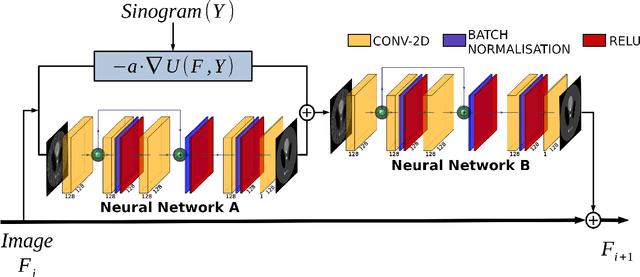
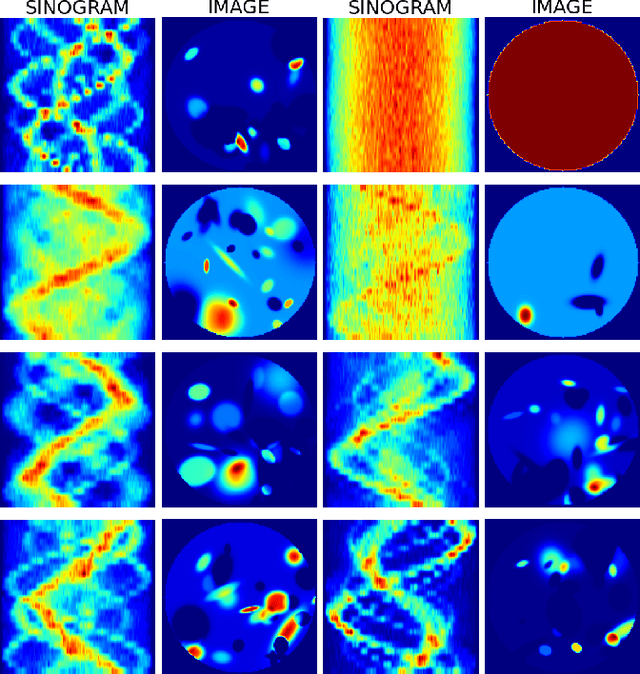
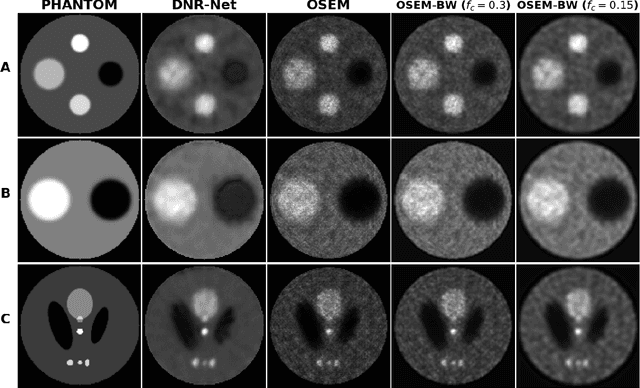
Abstract:In this work, we present the Deep Newton Reconstruction Network (DNR-Net), a hybrid data-driven reconstruction technique for emission tomography inspired by Newton's method, a well-known iterative optimization algorithm. The DNR-Net employs prior information about the tomographic problem provided by the projection operator while utilizing deep learning approaches to a) imitate Newton's method by approximating the Newton descent direction and b) provide data-driven regularisation. We demonstrate that DNR-Net is capable of providing high-quality image reconstructions using data from SPECT phantom simulations by applying it to reconstruct images from noisy sinograms, each one containing 24 projections. The Structural Similarity Index (SSIM) and the Contrast-to-Noise ratio (CNR) were used to quantify the image quality. We also compare our results to those obtained by the OSEM method. According to the quantitative results, the DNR-Net produces reconstructions comparable to the ones produced by OSEM while featuring higher contrast and less noise.
* 7 pages, 4 figures, Proceedings
A Bayesian Optimization Approach for Attenuation Correction in SPECT Brain Imaging
Sep 24, 2021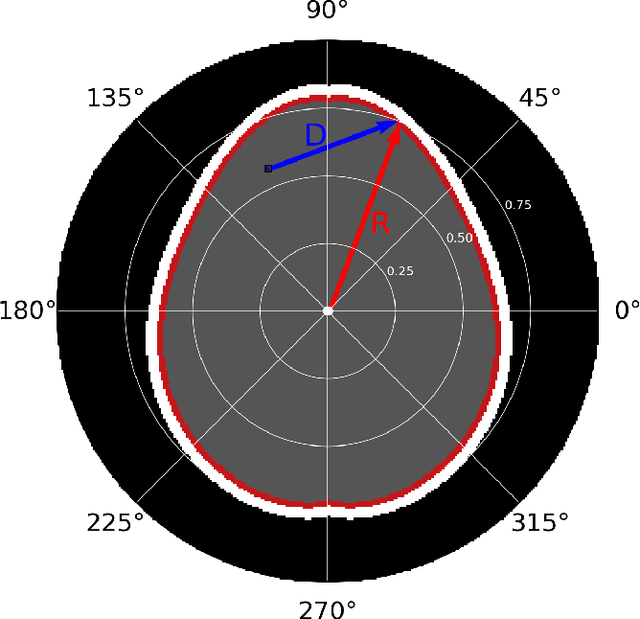
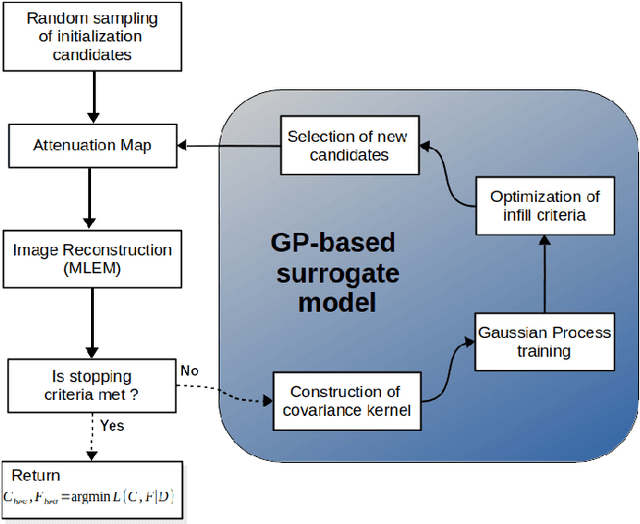
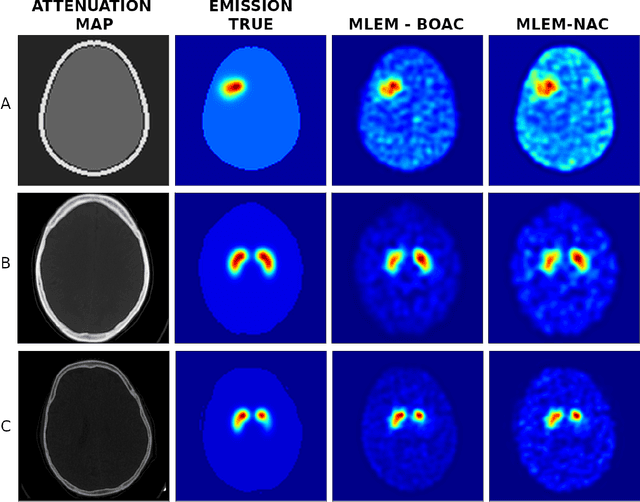
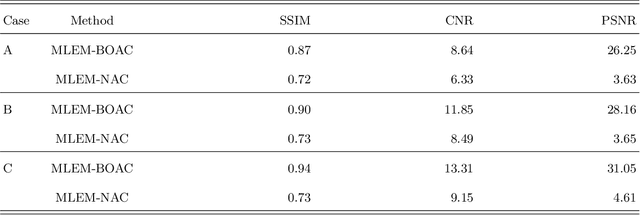
Abstract:Photon attenuation and scatter are the two main physical factors affecting the diagnostic quality of SPECT in its applications in brain imaging. In this work, we present a novel Bayesian Optimization approach for Attenuation Correction (BOAC) in SPECT brain imaging. BOAC utilizes a prior model parametrizing the head geometry and exploits High Performance Computing (HPC) to reconstruct attenuation corrected images without requiring prior anatomical information from complementary CT scans. BOAC is demonstrated in SPECT brain imaging using noisy and attenuated sinograms, simulated from numerical phantoms. The quality of the tomographic images obtained with the proposed method are compared to those obtained without attenuation correction by employing the appropriate image quality metrics. The quantitative results show the capacity of BOAC to provide images exhibiting higher contrast and less background artifacts as compared to the non-attenuation corrected MLEM images.
Deep Convolutional Neural Network for Low Projection SPECT Imaging Reconstruction
Aug 09, 2021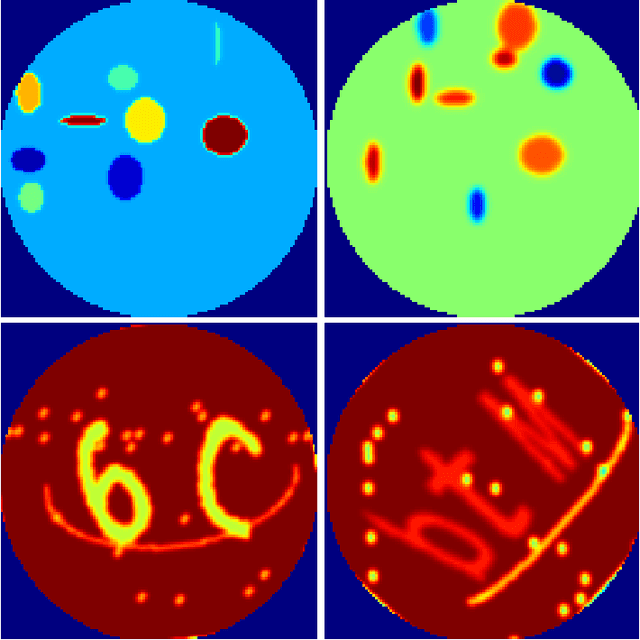

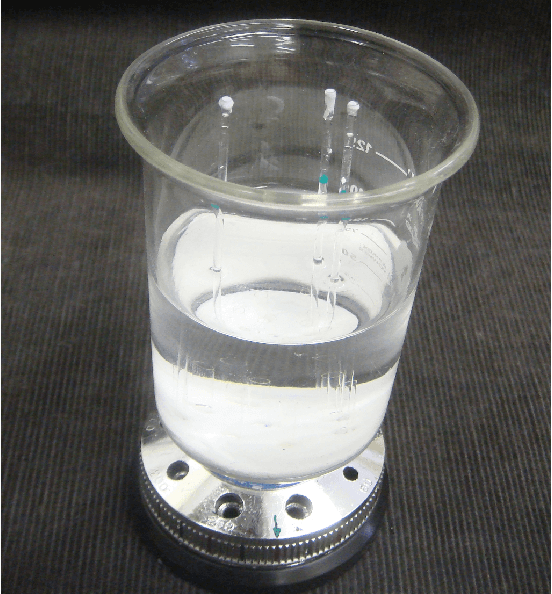
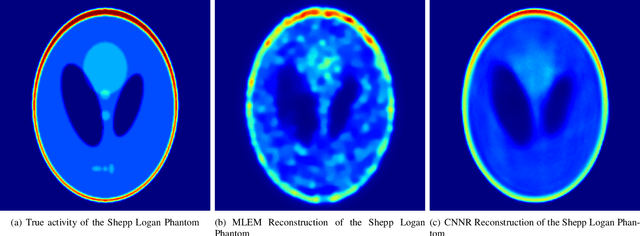
Abstract:In this paper, we present a novel method for tomographic image reconstruction in SPECT imaging with a low number of projections. Deep convolutional neural networks (CNN) are employed in the new reconstruction method. Projection data from software phantoms were used to train the CNN network. For evaluation of the efficacy of the proposed method, software phantoms and hardware phantoms based on the FOV SPECT system were used. The resulting tomographic images are compared to those produced by the "Maximum Likelihood Expectation Maximisation" (MLEM).
SPECT Angle Interpolation Based on Deep Learning Methodologies
Aug 09, 2021
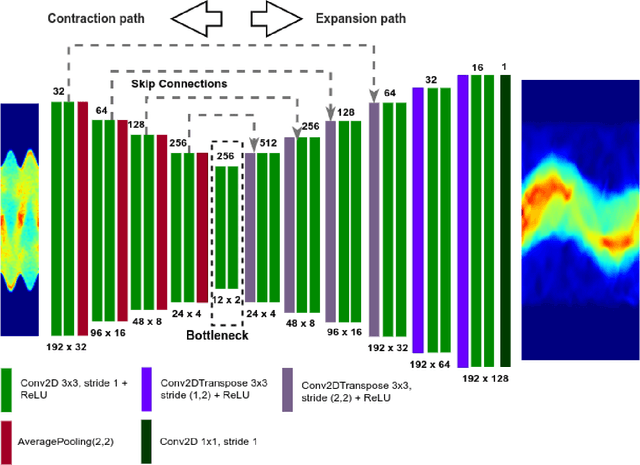
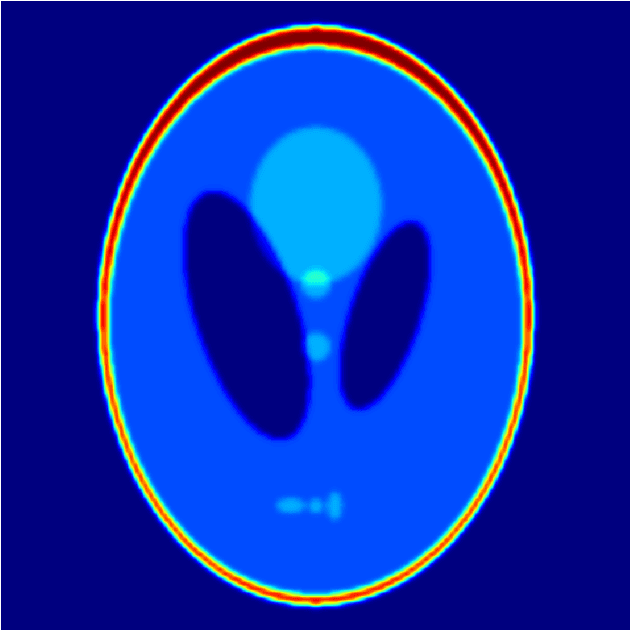
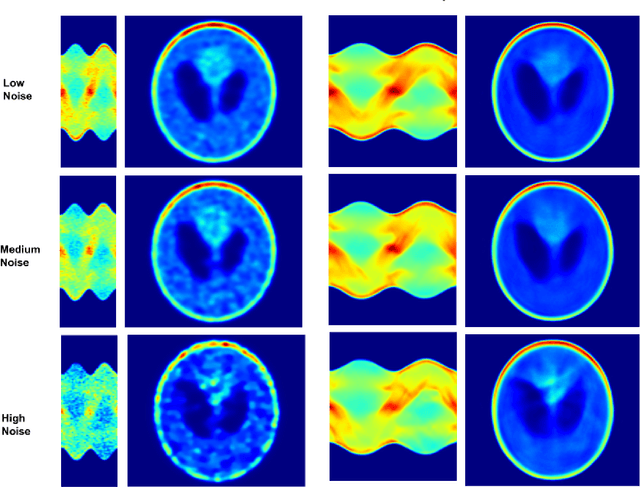
Abstract:A novel method for SPECT angle interpolation based on deep learning methodologies is presented. Projection data from software phantoms were used to train the proposed model. For evaluation of the efficacy of the method, phantoms based on Shepp Logan, with various noise levels added were used, and the resulting interpolated sinograms are reconstructed using Ordered Subset Expectation Maximization (OSEM) and compared to the reconstructions of the original sinograms. The proposed method can quadruple the projections, and denoise the original sinogram, in the same process. As the results show, the proposed model significantly improves the reconstruction accuracy. Finally, to demonstrate the efficacy and capability of the proposed method results from real-world DAT-SPECT sinograms are presented.
SPECT Imaging Reconstruction Method Based on Deep Convolutional Neural Network
Oct 19, 2020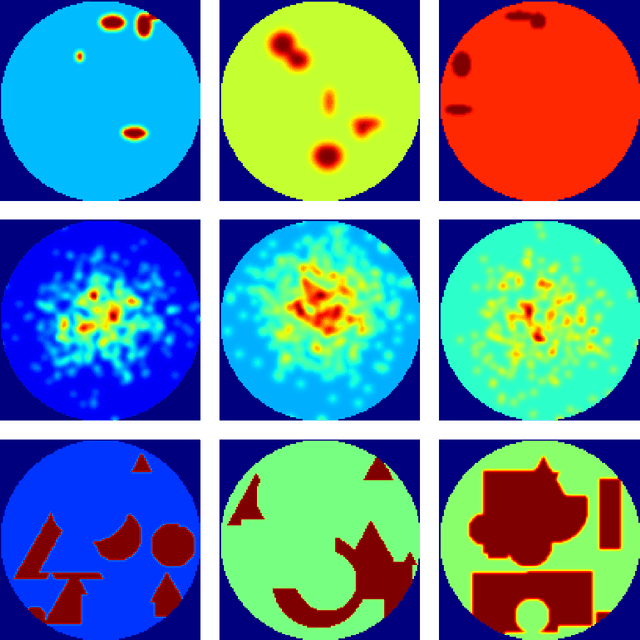
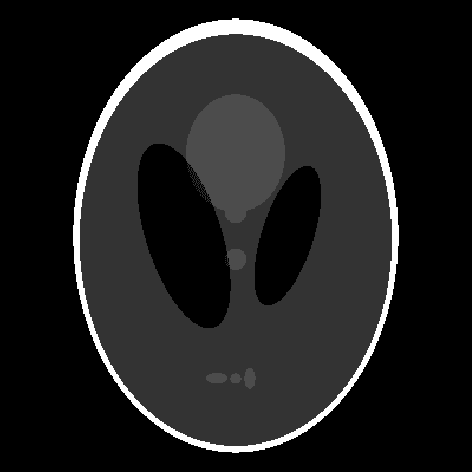
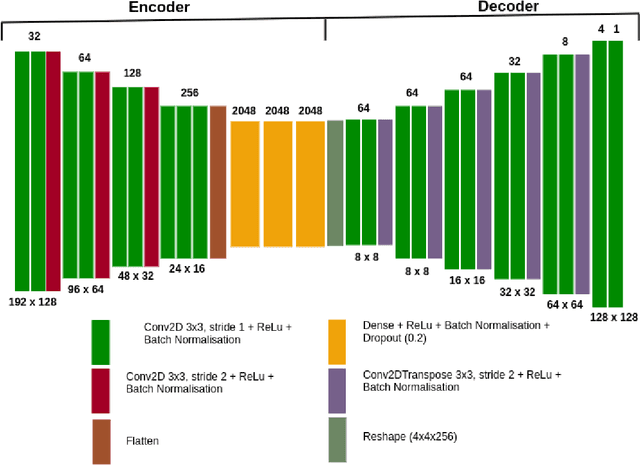
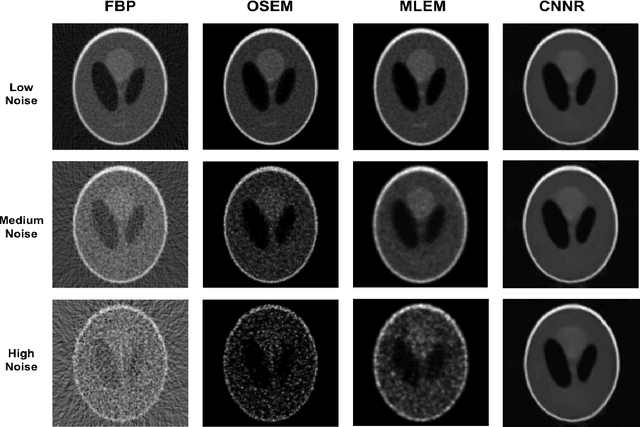
Abstract:In this paper, we explore a novel method for tomographic image reconstruction in the field of SPECT imaging. Deep Learning methodologies and more specifically deep convolutional neural networks (CNN) are employed in the new reconstruction method, which is referred to as "CNN Reconstruction - CNNR". For training of the CNNR Projection data from software phantoms were used. For evaluation of the efficacy of the CNNR method, both software and hardware phantoms were used. The resulting tomographic images are compared to those produced by filtered back projection (FBP) [1], the "Maximum Likelihood Expectation Maximization" (MLEM) [1] and ordered subset expectation maximization (OSEM) [2].
 Add to Chrome
Add to Chrome Add to Firefox
Add to Firefox Add to Edge
Add to Edge